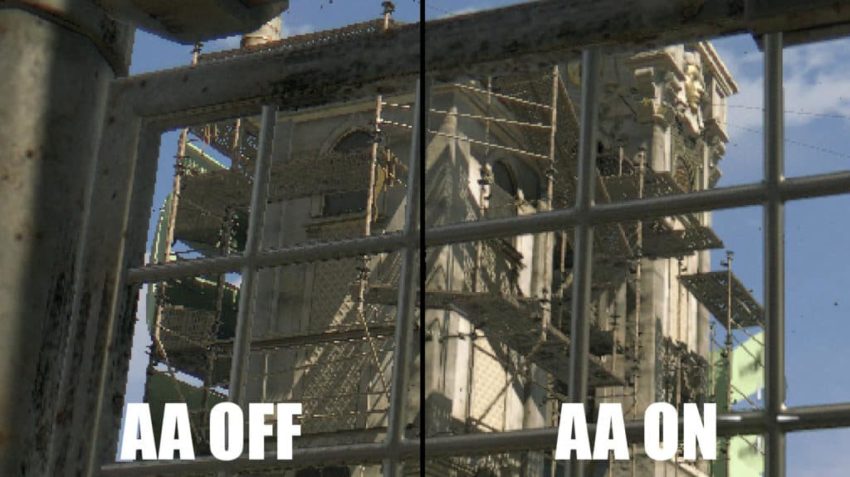


The best anti-aliasing method can be difficult to choose and it generally depends on your machine.

However, the good news is that this is still a relatively new anti-aliasing type and there is plenty of room for improvement. It is plagued by the same issue as FXAA in that it sometimes over-blurs. It combines several techniques in order to smooth out the edges but still doesn’t work as effectively as we would have liked. TXAA is only slightly more demanding than FXAA but is also a better solution. There will sometimes be small details that are completely smoothed over. Its anti-aliasing process consists of smoothing out the jagged edges but you will often find the whole image blurry. Unfortunately, the way FXAA accomplishes this is relatively ineffective. However, FXAA isn’t as hungry for processing power as MSAA and is a perfect solution for those with lower-end machines. Like MSAA, you’re likely to find FXAA in almost every game’s settings, sometimes referred to as FSAA. It performs in much the same way as CSAA in that it works similarly to MSAA but doesn’t overwork the GPU. Of course, AMD has devised an answer to NVIDIA’s exclusive anti-aliasing solution. Where it differs from MSAA is that it offers much better performance and is naturally only available on NVIDIA cards. This is NVIDIA’s anti-aliasing solution which works very similarly to MSAA. You can also find MSAA available at x2, x4, and x8, with greater system demands as you go higher. Although this significantly speeds up the anti-aliasing process and lowers the GPU’s workload, it can be a little spotty in execution. MSAA will only smooth out certain parts of the frame where it deems it necessary. This approach functions a little differently. In theory, this is one of the most effective methods of anti-aliasing but it requires a very strong machine to process it. The way SSAA does anti-aliasing is by rendering the image in a higher resolution and then downsizing it. Let’s look at each type of anti-aliasing and give you some insight into which type does what. If you have ever tinkered with a modern game’s graphics settings, you are likely already aware of this. Which Type Of Anti-Aliasing Does What?Īs mentioned earlier, there is more than one type of anti-aliasing. Anti-aliasing solves this problem by taking samples from the surrounding area and filling the empty space with similar-looking pixels to create a smoother line. This is fine if those lines are exclusively vertical or horizontal, but they rarely are.Ī diagonal line will look like a string of squares connected by their corners. When pixelized images are shown, the lines in these images are made of pixels strung together. Let’s delve deeper into the original problem so we can understand the issue better. To say that anti-aliasing smooths out that jaggedness is doing a disservice to this simple yet incredible technology. This results in issues such as pixelized images with jagged object edges. In some cases, it’s simply too hard to draw those 3D assets the way they’re supposed to look. This means that it will create an image representing the 3D objects by using pixels. This 2D image is generated by the GPU by taking the camera’s view and drawing what it sees. Unfortunately, we still don’t have 3D monitors. If you’re unfamiliar with how computer graphics work, you should know that, although most video games are 3D, the image that is displayed on your screen has to be 2D. Before answering that question, we should make sure we understand why those ugly jagged edges appear on your screen in the first place.


 0 kommentar(er)
0 kommentar(er)
